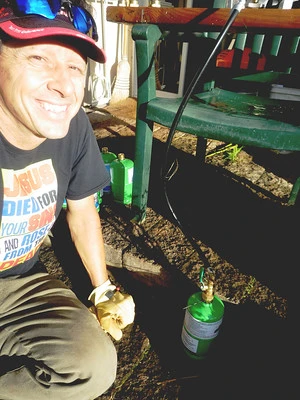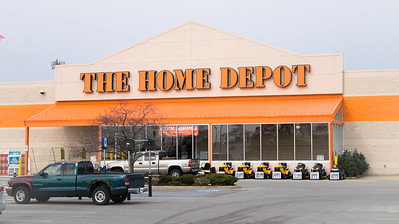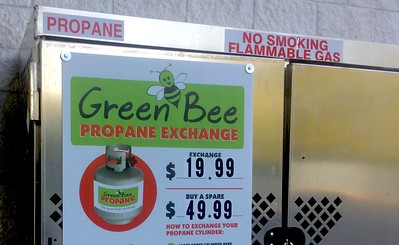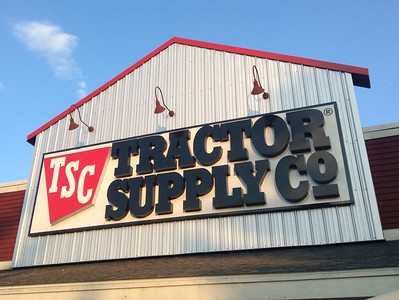
Imagine you’re out camping, ready to fire up your portable grill with a 1-lb propane tank. It’s convenient, lightweight, and easy to use. But then you wonder—do you need a regulator for this small tank, just like the bigger ones at home?
In this article, we’ll explore why a regulator might be necessary, even for a 1-lb propane tank. While these small tanks are designed for certain appliances, there are situations where a regulator can make a big difference in safety and performance.
We’ll break down when you should use a regulator with a 1-lb tank, how to attach one if needed, and the safety tips you need to keep in mind. Whether you’re grilling, heating, or lighting up a campsite, this guide will help you use your propane tank safely and effectively.
What Is a Regulator By The Way
A propane regulator is a small device that controls the flow of gas from the tank to your appliance. Think of it like a faucet for propane—it makes sure the gas comes out at a steady and safe pressure, usually around 11 inches of water column (which is a standard measure for gas pressure). Without a regulator, the gas might come out too fast or too slow, which could cause problems with your appliance or even be dangerous.
You need a regulator to keep things safe and running smoothly. Propane tanks, especially larger ones, can have high pressure (sometimes over 100 PSI). A regulator reduces this pressure to a safer level that your appliance can handle. For example, if you’re using a propane stove, the regulator makes sure the flame stays steady and doesn’t get too high or too low. It also helps prevent accidents, like gas leaks or explosions, by controlling the flow of propane.
Read Also: Propane Regulator Is Over 10 Years Old, Get It Checked
Can You Use a Regulator with a 1-Lb Propane Tank?
Yes, it’s physically possible to attach a regulator to a 1-lb propane tank. These small tanks usually come with a threaded valve that can connect to various appliances, and with the right adapter, you can attach a regulator. The adapter helps fit the regulator to the smaller size of the 1-lb tank, which typically has a connection known as a “Type 1” fitting or a CGA 600 connection.
While most 1-lb tanks are designed for use without a regulator, there are situations where you might need one. For example, if you’re connecting the 1-lb tank to an appliance that normally uses a larger tank with higher pressure (like a full-size grill), a regulator is essential to reduce the pressure from around 100 PSI in the tank to the safe operating pressure of the appliance, usually around 11 inches of water column. Another case is if you’re using an appliance that doesn’t have a built-in regulator and requires a steady flow of gas, such as a propane heater. In these cases, using a regulator ensures safety and proper function.
Using a regulator in these situations ensures that the gas flows at the right pressure, which not only keeps your appliance working properly but also helps prevent potential hazards like gas leaks or flare-ups. Even though 1-lb tanks are small, the pressure inside can still be quite high, so having a regulator when needed can make a big difference in keeping everything safe and efficient.
In summary, while you don’t always need a regulator with a 1-lb propane tank, there are specific cases where it’s crucial, especially when connecting to larger appliances or those that require controlled gas flow. Always double-check your setup to see if a regulator is necessary for your specific use.
Read Also: Propane Regulator Won’t Reset (8 Causes & Solutions)
How to Attach a Regulator to a 1-Lb Propane Tank
Step-by-Step Guide
- Gather Your Supplies:
Before starting, make sure you have the regulator, a propane adapter (if needed), and your 1-lb propane tank. Double-check that all connections are clean and free of dirt or debris. - Turn Off the Appliance:
Ensure the appliance you’re connecting to is turned off. This is an important safety step to prevent any accidental gas flow while you’re connecting the regulator. - Attach the Adapter (If Necessary):
If your regulator doesn’t fit directly onto the 1-lb propane tank, you’ll need an adapter. Simply screw the adapter onto the valve of the propane tank. Make sure it’s tight, but don’t overtighten—hand-tight should be enough. - Connect the Regulator to the Adapter or Tank:
Once the adapter is in place, attach the regulator to the adapter. If you’re not using an adapter, attach the regulator directly to the propane tank’s valve. Twist it clockwise until it’s secure. Again, hand-tight should be sufficient. - Check for Leaks:
After the regulator is attached, check for gas leaks. You can do this by mixing a little dish soap with water and brushing it on the connection points. If you see bubbles forming when you slowly open the tank valve, that means there’s a leak, and you should tighten the connections or replace faulty parts. - Connect the Appliance:
Once you’re sure there are no leaks, connect the other end of the regulator to your appliance’s gas inlet. Make sure this connection is also secure. - Turn On the Gas:
Slowly open the valve on the propane tank. Listen for any hissing sounds that could indicate a leak. If everything sounds and looks good, your setup is complete, and you can turn on your appliance.
Tools You Might Need
- Propane Adapter:
If your regulator isn’t designed for a 1-lb tank, you’ll need a propane adapter that fits between the tank and the regulator. Look for a CGA 600 adapter or Type 1 fitting. - Wrench (Optional):
While most connections can be hand-tightened, having a small adjustable wrench on hand can help if you need a little extra torque. Just be careful not to overtighten. - Leak Detection Solution (Optional):
You can buy a special propane leak detection solution, but a simple mix of dish soap and water will work just fine. This is useful for checking that your connections are secure and safe.
Following these steps carefully will help ensure that your propane setup is safe and functional, even with a smaller 1-lb tank.
Read Also: Propane Regulator Valve Problems (6 Causes & Solutions)
Safety Considerations
When using a regulator on a 1-lb propane tank, safety should be your top priority. One of the main risks is gas leaks, which can happen if connections aren’t tight or if the regulator isn’t properly attached.
Always check for leaks after connecting the regulator by using a soap and water solution—if you see bubbles, there’s a leak that needs fixing. Also, make sure you’re using the right type of regulator and adapter for your specific setup. Using incompatible parts can lead to improper gas flow or even accidents.
Keep your propane tank and regulator away from open flames or sparks while connecting or disconnecting them. Propane is highly flammable, and a small mistake could cause a fire. Always store your 1-lb propane tank in a cool, well-ventilated area when not in use, and never leave it in direct sunlight or in a hot car.
Common Mistakes to Avoid:
One common mistake people make is overtightening connections. While it’s important to ensure everything is secure, too much force can damage the threads or connections, leading to leaks. Hand-tightening is usually enough. Another mistake is forgetting to check for leaks after attaching the regulator. This step is crucial for preventing dangerous gas leaks.
Some people also use the wrong type of regulator for their appliance or tank, which can cause the system to operate improperly. Make sure you’re using a regulator that’s compatible with both your 1-lb tank and the appliance. Finally, avoid leaving the propane tank valve open when the appliance is not in use. Always turn off the gas when you’re finished to prevent accidental gas flow.
When Not to Use a Regulator
In some cases, you don’t need to use a regulator with a 1-lb propane tank. Many small propane appliances, like portable camping stoves or small tabletop grills, are designed to work directly with the pressure coming from the tank. These devices are built to handle the gas flow without needing any additional regulation, so adding a regulator isn’t necessary and might even complicate things.
Appliances That Don’t Require a Regulator:
Some common propane devices that don’t usually need a regulator include small camping stoves, portable heaters designed for 1-lb tanks, and certain types of propane lanterns. These appliances are made to work safely with the high pressure of a 1-lb tank right out of the box. As long as you’re using the tank with devices that are designed for it, you can skip the regulator and just connect the tank directly to the appliance. Always double-check your device’s manual to be sure, but for most small, portable propane gear, a regulator isn’t needed.
For these types of appliances, the manufacturer has already accounted for the pressure of a 1-lb propane tank, so they’re built to operate safely and efficiently without any additional equipment. Just connect the tank, follow the usage instructions, and you’re good to go. However, always remember to handle the tank carefully and store it properly when not in use to ensure safety. If in doubt, refer to the appliance’s user manual to confirm whether a regulator is needed or not.
Popular Brands of Regulator Suitable for 1-LB Propane Tank
Here are some examples of regulators suitable for 1-lb propane tanks, along with their technical specifications:
1. Mr. Heater F273701 Propane Regulator
- – Output Pressure: 11 inches water column (standard low pressure)
- – Inlet Connection: 1/4″ Female Pipe Thread (FPT)
- – Outlet Connection: 3/8″ Male Pipe Thread (MPT)
- – Flow Rate: Up to 75,000 BTU/hr
- – Compatibility: Can be used with adapters to connect to 1-lb propane tanks for use with portable heaters, stoves, and grills.
2. Coleman 5-Foot High-Pressure Propane Hose and Adapter
- – Output Pressure: Varies depending on appliance, typically regulated to 11 inches water column when used with appliances requiring a regulator.
- – Inlet Connection: Type 1 (QCC1) fitting for standard propane cylinders with an adapter for 1-lb tanks
- – Outlet Connection: 1″ 20 Male Throwaway Cylinder Thread
- – Hose Length: 5 feet (for added flexibility)
- – Compatibility: Allows connection of full-size appliances, such as grills, to 1-lb propane tanks.
3. Camco 59333 Horizontal 2-Stage Propane Regulator
- – Output Pressure: 11 inches water column (low pressure)
- – Inlet Connection: 1/4″ Female National Pipe Thread (FNPT)
- – Outlet Connection: 3/8″ Female National Pipe Thread (FNPT)
- – Flow Rate: Up to 210,000 BTU/hr
- – Compatibility: Suitable for use with RVs and outdoor appliances when connected with the right adapter to 1-lb tanks.
4. Cavagna Group 52-A-890-0006 Regulator
- – Output Pressure: Adjustable from 0 to 10 PSI (high pressure)
- – Inlet Connection: 1/4″ Female Pipe Thread (FPT)
- – Outlet Connection: 3/8″ Male Pipe Thread (MPT)
- – Flow Rate: Adjustable, typically for high-pressure appliances requiring precise control.
- – Compatibility: Can be used with 1-lb propane tanks for high-pressure applications when paired with appropriate adapters.
5. Marshall Excelsior MEGR-130-5 LP Gas Regulator
- – Output Pressure: 11 inches water column (standard low pressure)
- – Inlet Connection: 1/4″ Female Inverted Flare
- – Outlet Connection: 3/8″ Female Pipe Thread (FPT)
- – Flow Rate: Up to 160,000 BTU/hr
- – Compatibility: Ideal for use with small appliances and can be adapted for 1-lb propane tanks.
When selecting a regulator, ensure that the output pressure matches the requirements of your appliance. The standard low pressure for most propane appliances is 11 inches of water column, while high-pressure appliances may require adjustable regulators.
Additionally, consider the flow rate (BTU/hr) to ensure the regulator can handle the energy output your device needs. Adapters are often necessary to connect these regulators to 1-lb propane tanks, so double-check compatibility before purchasing.
To Conclude This
While it is possible to use a regulator on a 1-lb propane tank, it’s not always necessary. The need for a regulator depends on the specific appliance you’re using and the situation at hand. For larger appliances or those that require controlled gas flow, attaching a regulator with the right adapter can enhance safety and performance.
However, many smaller, portable devices are designed to operate directly with the tank’s pressure without any extra equipment. Always prioritize safety by checking for leaks, using compatible parts, and following the manufacturer’s guidelines. With the right approach, you can enjoy a safe and efficient propane setup, even with a small 1-lb tank.

Mike is an experienced propane technician with over 15 years of professional experience in the field. He has dedicated his career to helping customers with their propane needs, from installation to maintenance and repair. Together with Jeremy, he co-founded this website to provide useful information and guidance to customers seeking reliable propane services.




